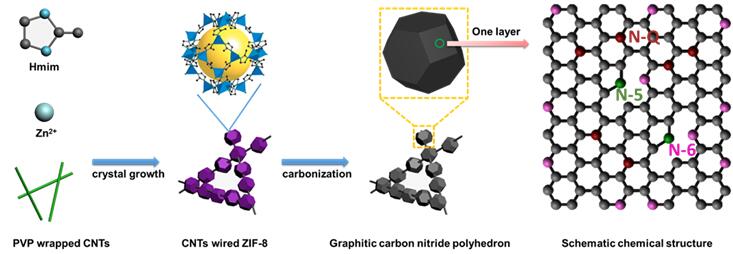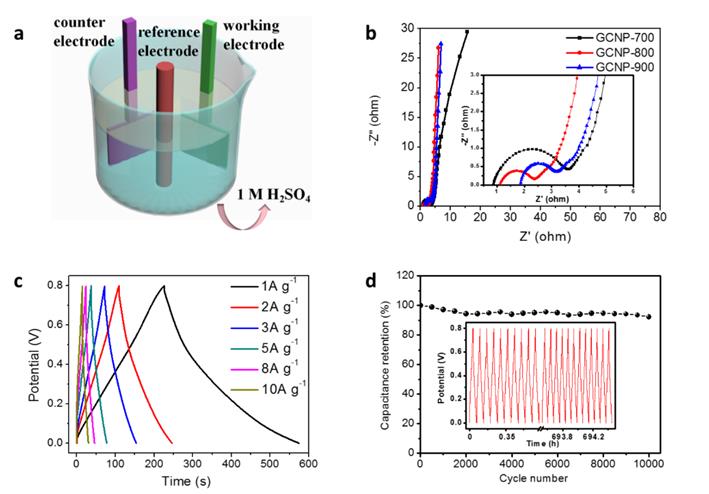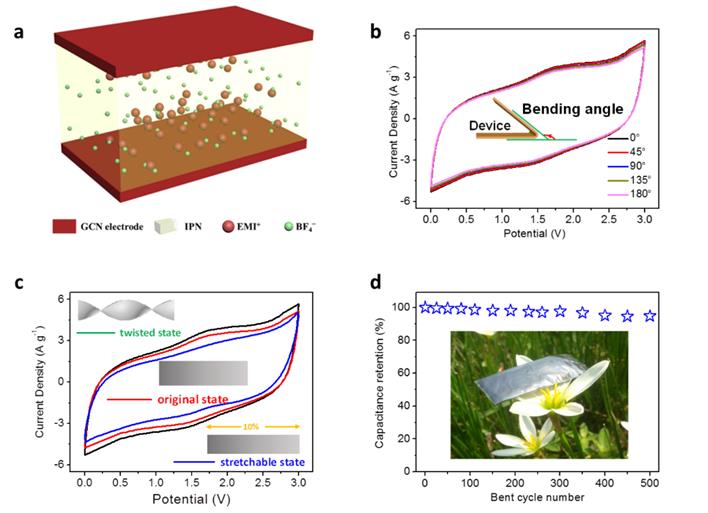With the rapid developing of flexible electronics nowadays, various wearable electronic devices, such as Apple Watch and Mi Band, rush into our everyday life. In order to keep pace with the development of smart devices, we need to develop wearable energy storage devices. Flexible supercapacitors with merits of light-weight, foldability, long cycling life and high power density have attracted tremendous research enthusiasm as a promising power source for modern wearable electronic devices. To date, although some achievements on flexible supercapacitors has been made, a perfect combination of both high energy storage capacity and flexibility still remains challenge because of the unstable energy output of supercapacitor when encountering various human activities.
Very recently, a team of researchers, led by Prof. CHEN Wei at Suzhou Institute of Nano-Tech and Nano-Bionics (SINANO), Chinese Academy of Sciences, proposed a novel assembly strategy to fabricate a flexible supercapacitor with high energy capacity and long cycling life. They synthesized the carbon nanotubes (CNTs) wired MOF structure through an in-situ growth method. Afterwards, they fabricated a highly nitrogen-doped continuous graphitic carbon nitride polyhedron by directly pyrolysis of CNTs/MOF composites. Particularly, CNTs in the assembly not only serve as the binder to improve continuity of materials for ensuring mechanical properties, but also act as the channel to enhance electrical conductivity. The novel structure could be considered as three-dimensional inner-connected graphene-like framework with a high nitrogen-doping content (17.82%), a large specific surface area (920 m2 g-1) and ideal average pore size (2.5 nm), which improves both electron conduction and mass transport during charge-discharge process, and provides extra pseudocapacitance.
Logically, this electrode material exhibited high energy storage capacity with a specific capacitance of 426 F g-1 at a current density of 1 A g-1 in 1 M H2SO4 and excellent cycling stability over 10000 cycles. Furthermore, they fabricated a flexible solid-state supercapacitor based on the electrode and a highly ion-conductive interpenetrating network containing ionic liquid electrolyte. The foldable device achieved a superior specific energy density of 59.40 Wh kg-1 at a current density of 1 A g-1 with an outstanding flexibility (stable energy supply under different deformation states for a long cycling time), showing an enormous application potential in flexible energy devices.
This work was supported by the Science and Technology of Jiangsu Province, the National Natural Science Foundation of China and the External Cooperation Program of BIC, Chinese Academy of Sciences.

Figure 1. Schematic for the synthetic route of highly nitrogen-doped graphitic carbon nitride polyhedron.(Image by SINANO)

Figure 2. Electrochemical performance characteristics conducted in a three-electrode system in 1 M H2SO4 electrolyte.(Image by SINANO)

Figure3. Electrochemical properties and flexibility performance of the supercapacitor based on GCNP electrode and IPN electrolyte.(Image by SINANO)
Reference:A Continuous Carbon Nitride Polyhedron Assembly for High-Performance Flexible Supercapacitors
Contact Information:
Prof.CHEN Wei,Suzhou Institute of Nano-Tech and Nano-Bionics,Chinese Academy of Science
Email: wchen2006@sinano.ac.cn

